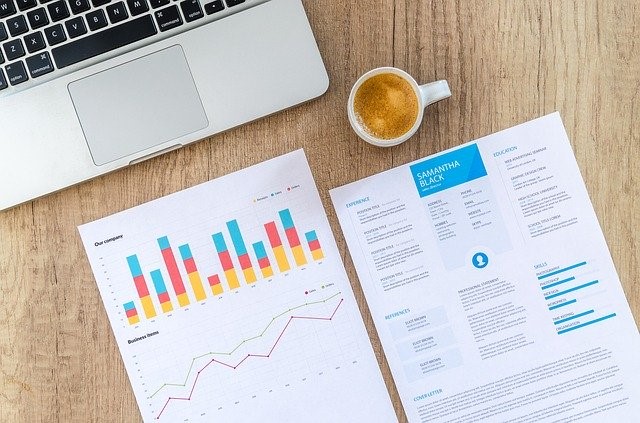
Why Financial Modeling Is Used
Why is financial modeling used in business?
What is financial modeling? What does it do? How do you make financial models? Is it hard to learn?
What Is Financial Modeling?
Making a financial model enables a variety of principals and analysts to engage in financial modeling. This process helps summarize a company’s financials, and forecast outcomes based upon chosen inputs and variables. It is used to assess impacts, project the future and make decisions.
Structure
Financial modeling is traditionally spreadsheet based, though findings may be presented in more modern and visual formats.
Beyond simple summarized sales, revenue, expense and profit figures, financial modeling tools can be used to produce forward looking financials. Such as cash flow statements, profit and loss statements and balance sheets.
Dynamic
Financial modeling is dynamic. It is fluid and flexible. It saves an enormous amount of time to have an Excel spreadsheet or more modern and specialized software tool to automatically make multiple adjustments and outcomes based on changing different inputs. This enables fast calculations and efficiently testing and factoring a variety of cases.
Future Facing
Financial modeling is used to project and assess the future. Depending on the stage of your business you may be able to base your models on large amounts of existing hard data. Or in early stages it may be mostly based upon research, benchmarks and estimates. Either way, this is not an assessment of current company financials. It looks forward to what could be.
It Is For Running Scenarios
The primary purpose of financial modeling is to analyze or forecast the outcome of a scenario or thesis. What will happen to Z if X changes Y? This is what you will typically find on any given business plan template.
The best tools will enable users to run multiple scenarios, or continue to change inputs to see what is required to achieve the desired output.
What Is Financial Modeling Used For?
In business there are several specific uses for financial modeling, including the following.
Business Valuation
Use modeling to forecast the value of a business given assumed factors. This can be used to project target share prices in an IPO. Or for future fundraising rounds, as well as what your shares or options may be worth in the future. It can definitely help in assessing how much an acquisition could be worth.
Stress Testing
This process can be used to test the stress of events on a business, and how safe and sustainable the business is from potential events. For example, recessions, rising interest rates, price wars, competition, changes in customer behaviour, new technologies and even pandemics.
Analyzing The Effects Of Investments & Budgets
Financial modeling is the perfect “what if?” tool. Plug in many different scenarios and see what the effects are. What if you invest more in one area of your business versus another? What if you buy one company over another? What if you pursue a certain type of cover over another?
Strategic Planning
The outcome of financial modeling is being able to make more educated decisions, and to make strategic short, medium and long term plans for the ideal outcomes. It can help guide virtually every decision business leaders need to make.
Negotiating
Both sides of the table can use financial modeling to argue their points and why a business may be worth less or more in a specific scenario. This is particularly useful in M&A deals.
Who Uses Financial Models?
A wide range of professionals can leverage financial modeling, including:
- Investment bankers
- Larger companies making acquisitions
- Smaller companies receiving acquisition offers
- Accountants and financial advisors
- Equity investors and VCs
- Startup entrepreneurs
Best Practices In Financial Modeling
Automatically dynamic
If you are not a fan of Excel and accounting, it can be tempting to throw a few numbers into a table and manually adjust them. This may lead to skimping on many important scenarios and insights, if not just being inefficient in time management. Look for a dynamic solution.
Easy to use and read
While there might be a lot going on in the background in your financial modeling, it is far better to present the findings in the simplest way. This is true for virtually all uses. Keep it simple.
Build in big unknowns
View the case studies of hundreds of successful founders, businesses and investors, and you’ll find one of the main themes is not that everything went according to plan, but that they made it through when others didn’t. They just survived longer. To do that it helps to be prepared to weather the unknown. Even big ones.
Flexible applications
A good financial modeling solution will have multiple applications. The output should be able to be used for initial business plans, creating pitch decks and fundraising, and creating internal work schedules.
What Do You Need For Financial Modeling?
Software
A pen and paper isn’t very dynamic. It doesn’t offer much credibility. It isn’t easy to share. Find a software solution that is easy for you to use.
Data
Even if you are a brand new startup, you need some factual basis to start a model. Market research and industry benchmarks provide a good start.
The Desired Outputs
Know what outputs and results you want to find out and display.
Summary
Financial modeling is a vital part of business. It doesn’t matter which side of the table you are on. This is a tool and skill that will lead to the best opportunities and investments, better decision making and investments, and increased sustainability. Not to mention ease of business. It has many uses. Today there are even more tools available that enable efficient financial modeling, even if you aren’t an MBA or accountant. Use them.

